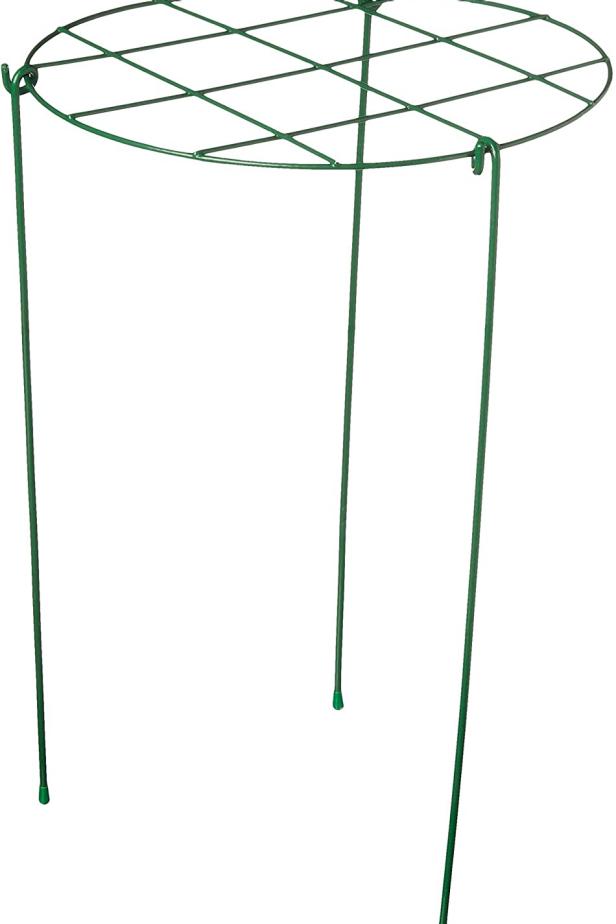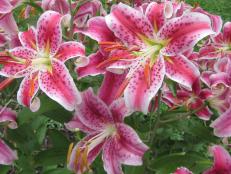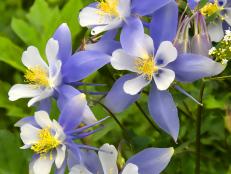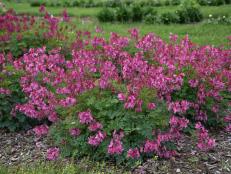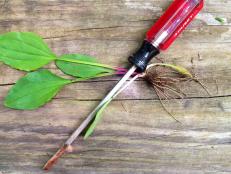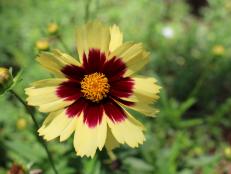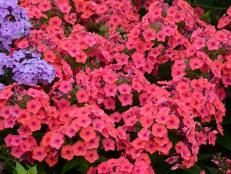How to Plant, Grow and Care for Delphinium
This sun-loving perennial will thrive with the right care. Get HGTV garden experts' delphinium growing tips.
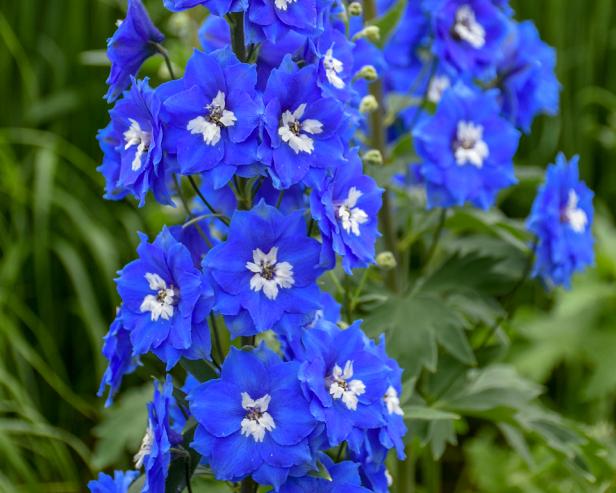
Walters Gardens at PerennialResource.com
Seeing a bed of delphiniums can inspire anyone to garden. These stately plants tower over other bloomers, true aristocrats of the garden. Traditionally delphinium delivers gardening's most elusive hue — true blue — but it also unfurls a range of flower colors, including purple, white, pink, lavender and lovely bicolor blends.
22 Plants to Attract Hummingbirds 22 Photos
Bring hummingbirds to your garden with these 22 flowers — including Delphinium.
As beautiful as delphiniums are, they also have a reputation for being very difficult to grow. If you can provide what they need and master a few simple tricks, you can bring the bold height and breathtaking colors of delphinium to life in your garden. Here’s what you need to know to grow gorgeous delphiniums.
What Delphiniums Need
Delphiniums like a frosty winter. They're native to the northern hemisphere and higher elevations of mountain regions in Africa. To germinate, their seeds need a period of cold in winter that delivers near or below freezing temperatures. In general, delphinums are perennial in zones 3 to 7 and don't thrive in regions with constant heat.
In the garden, give delphiniums a spot in full or part sun with well-drained soil that's rich in organic matter. Delphiniums are quintessentially British, and gardeners at the Royal Horticultural Society in England recommend giving these luxurious bloomers a dedicated spot in the garden where you intentionally prepare the soil with plenty of organic matter.
Delphiniums have hollow stems, and once those flower spikes form, stems topple easily. Prevent that by tucking plants into a protected spot away from strong winds. This is especially important if you're growing the taller varieties that soar as high as 6 feet.
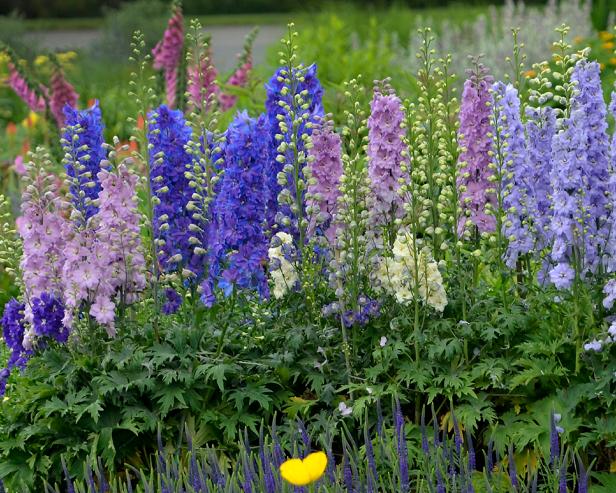
Walters Gardens at PerennialResource.com
Getting Started With Delphiniums
Before buying delphiniums, decide what type you want to grow. Full-size delphiniums reach for the sky, growing up to 6 feet and definitely need staking. Beautiful dwarf varieties are available that bring just as much color to the garden, including New Millennium ‘Mini Stars’ (above), which grow 18" to 30" tall. For other shorter varieties with full flower spikes, look for ‘Magic Fountain’ (36 inches), ‘Million Dollar’ (30" to 36") or ‘Belladonna’ (36" to 48") delphiniums.
Purchase plants in smaller pots (4 inch) for the best results. Early in the growing season, you might even find delphiniums in cell packs. They'll grow well, too. Buying plants in gallon pots might seem like the way to instant color, but the flower spikes won’t be as large as ones that settle into your garden as smaller plants.
One common name for delphinium is larkspur. Make sure when you buy plants that you're not buying an annual called larkspur (Consolida majus). It has ferny leaves, while delphinium leaves are flat and broad with coarsely toothed edges. Look for plant tags that say delphinium. Choose plants with strong, thick stems. Avoid plants that have already started forming flower buds.
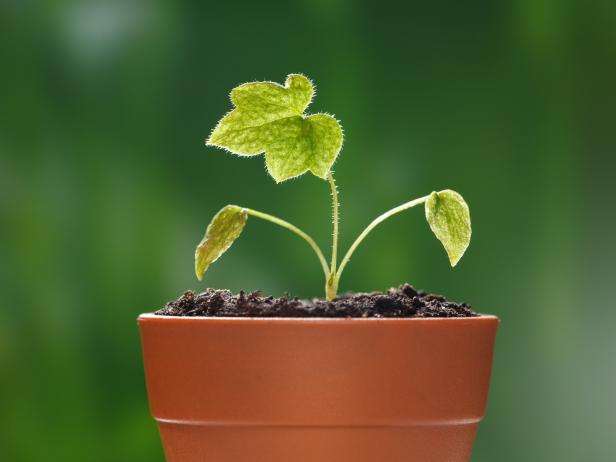
Shutterstock/Anest
To start delphinium seeds, you need to treat them with moist cold, a process known as stratification. This mimics what happens in nature when a delphinium plant drops seeds. To create these conditions, place delphinium seeds on a moist paper towel or coffee filter tucked into a sealed plastic bag or container. Stash this in the fridge for 24 to 36 hours. If seeds start to germinate on the moist surface, just cut them apart and plant the seed and the towel (which will decompose).

Walters Gardens at PerennialResource.com
Planting Tips for Delphiniums
Dig a big hole for your plant, even if it's in a smaller pot. Make it up to 12 inches wide and deep for the really tall varieties like the Pacific Giants; a smaller 10- by 10-inch hole works for varieties up to 36 inches tall. The reason you want to dig such a deep hole is to ensure good drainage in winter. Poor winter drainage is a common reason that delphiniums die.
Place the soil you excavate from the planting hole into a bucket or tub trug. Mix plenty of compost or other organic matter into the soil. Add that soil and compost mixture back to the hole, filling it to the point that it's the right height to support the delphinium you're planting. You want to plant it so the soil level of the pot soil rests at the soil level of your garden. Using your hands, press this soil down, and add about half of the remaining soil. Water to settle soil.
Mix a slow-release organic fertilizer into the remaining soil-compost mixture. Use this mixture to fill the rest of the hole. Water well after planting. Keep the soil moist during the first few weeks of growth.
Caring for Delphiniums
These gorgeous plants have shallow roots and need plenty of water to look their best. Mulch planting beds with a 2"- to 3"- thick layer to help retain soil moisture. Add a thin layer of compost to beds annually to nourish plants and soil.
Taller delphinium varieties need staking to prevent blossom-laden stems from toppling. The flower stems are so top heavy that even a rain (without wind) can cause stems to fall over from the weight of the wet blooms. Insert stakes at planting time to avoid spearing roots later.
The simplest way to stake delphiniums is with bamboo stakes and string. Weave the string around and between the stakes to create a network inside the stakes (almost like a spider web). As stems grow up, they'll grow through the openings and be supported. Your string web should be at least 3 feet high for taller delphinium varieties. Some gardeners enclose the base of tall delphiniums with wire fencing to provide support.
A grow-through hoop stake works well with delphiniums. As stems grow, they pass through the hoops, which provide support for the stems.
Increase the Flower Show
Delphiniums typically burst into bloom in spring, but you can coax these beauties to flower a second time during the growing season. To get plants to rebloom, cut flower stems to the ground as soon as blossoms start to fade. Don't wait for them all to die or the plant will start devoting energy to seed production. Cut the stalks as soon as they're past their peak color.
Give delphiniums a dose of organic fertilizer at this point to jump-start new growth. The plants will send up another set of flowering shoots, which should open in late summer to early fall.
If you don't remove fading flowers, the plant forms seed, which you might be able to save and sow outdoors in fall for new plants next spring.
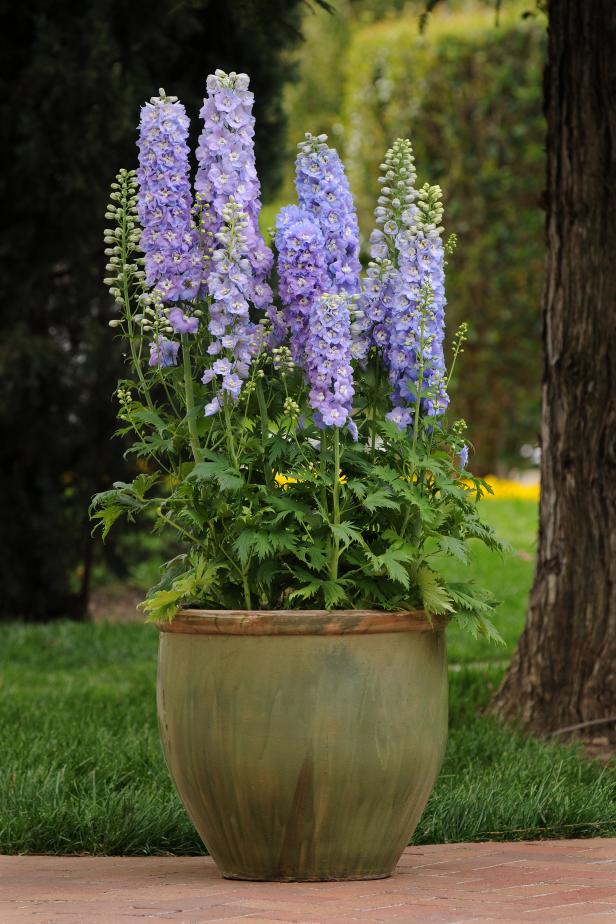
Ball Horticultural Company
The other key to a strong flower show for years to come is reducing or thinning the number of blossom shoots per plant. A 1-year-old plant should have one flower spike; a 2-year-old plant, three spikes. Gradually add more spikes over time as the plant matures from year to year. Eventually, an 8-year-old delphinium can have from 20 to 50 flower spikes.
Design Ideas for Delphinium
A delphinium is a classic cottage garden plant. Skirt it with bushy plants like catmint, coreopsis or Shasta daisy. Or use it as a companion to roses, lilies or foxgloves. With its towering height, count on delphinium to bring vertical interest to plantings.
If you have a cutting garden, include delphinium in it. The blooms make striking additions to garden bouquets and last up to a week or longer. The trick is to cap the end of the hollow stem with your thumb as soon as you cut it, then slowly plunge it into a bucket of water. The idea is to fill the stem with water. This is what competitive gardeners do when they enter their delphiniums in flower shows.
Choose shorter varieties to tuck into pots. In colder zones, overwinter pots in a cold garage or shed, somewhere that soil won't freeze. Water plants sparingly on occasion throughout winter to keep them from dying.
One last thing to note about delphiniums is that every part of the plant is poisonous. Deer and rabbits leave it alone — and so should your pets. Some gardeners develop a slight dermatitis when working around delphiniums. Wear gloves and long sleeves if you're sensitive to the plant.








